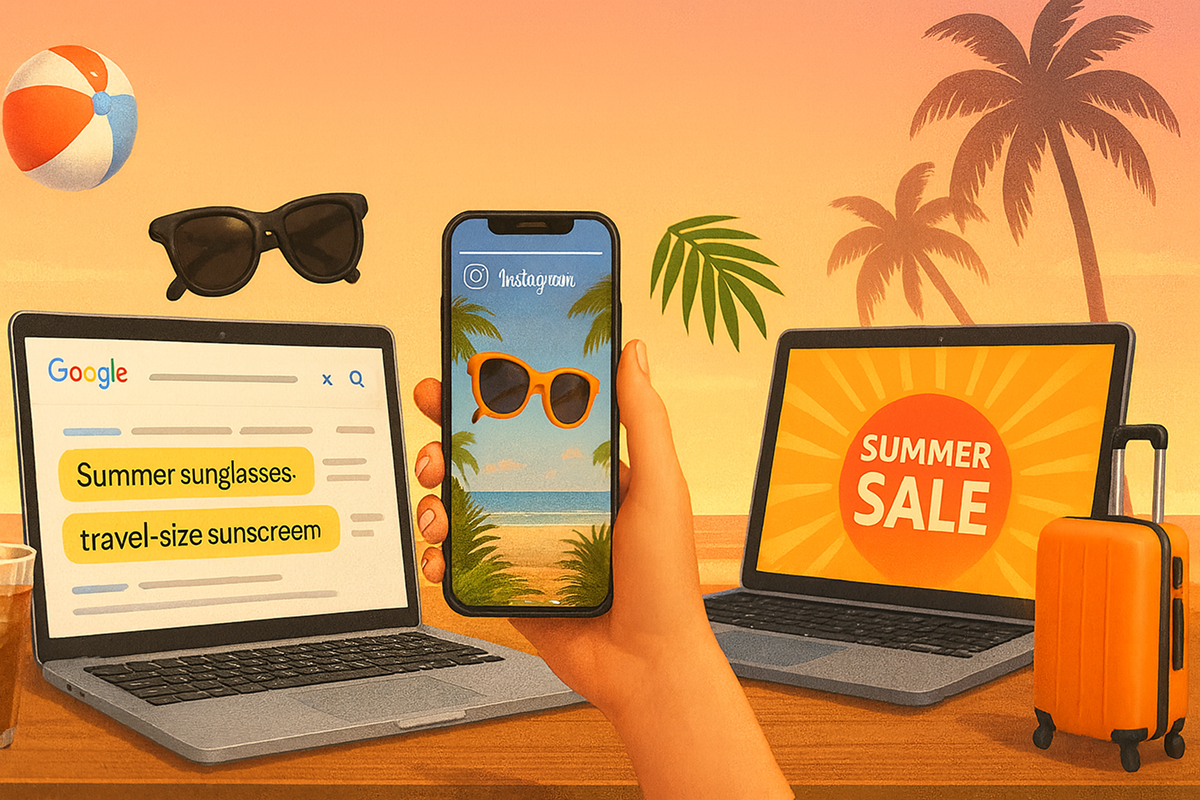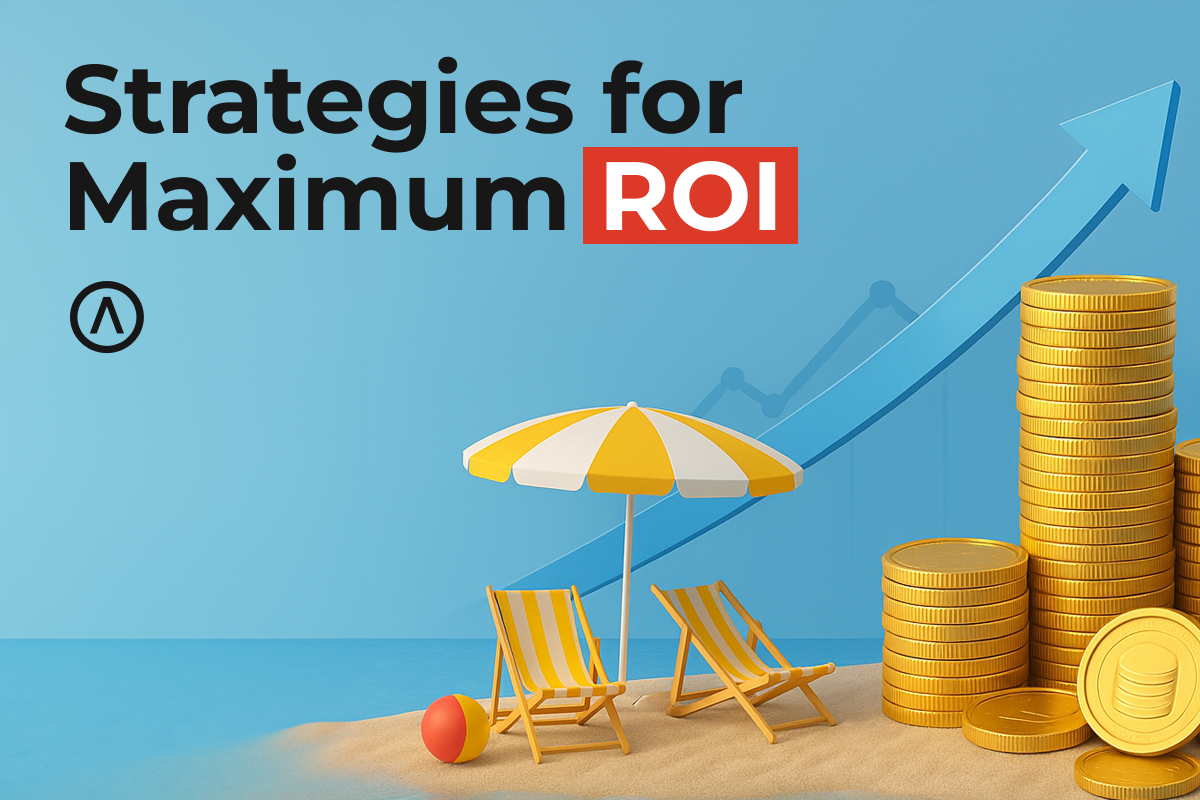Summer hits different when you're running PPC campaigns. Consumer behavior shifts, budgets get tight, and your carefully planned Q2 strategy suddenly feels like it was designed for a different planet.
Here's the thing: most brands treat summer like it's just another season. They keep running the same campaigns, wonder why their ROAS tanks, then panic-adjust everything in July when it's already too late.
We've managed over $50M in ad spend across summer seasons, and we're going to break down exactly what works (and what doesn't) when the temperature rises and attention spans drop.
The Summer Reality Check
Summer doesn't just change the weather—it completely rewrites the rules of digital advertising. Your audience is scrolling on mobile while poolside, making impulse purchases between vacation activities, and their priorities have shifted from "need" to "want."
Mobile traffic jumps 40-60% during summer months. Attention spans get shorter. Decision-making gets faster. And if your campaigns aren't built for this reality, you're basically lighting money on fire.
The brands that win during summer aren't just optimizing—they're completely rethinking their approach.
Budget Strategy: Stop Playing Defense
Most advertisers cut summer budgets because "people aren't buying." Wrong move.
Summer isn't about spending less—it's about spending smarter. Here's what actually works:
1. Front-Load Your Winners
Take your top 20% of keywords and audiences and increase their budgets by 30-50%. Summer attention is scarce, so dominate where you're already winning.
2. Cut the Dead Weight Fast
That campaign that's been "almost profitable" for months? Summer isn't going to fix it. Cut it now and reallocate that budget to proven performers.
3. Plan for the Spikes
Travel, outdoor gear, summer fashion—these industries see 200-300% CPC increases during peak months. Either budget for it or get out of the way.
We helped one e-commerce client increase their summer ROAS by 67% just by reallocating budget from broad campaigns to their top 15 product categories. Same total spend, dramatically different results.
Mobile-First or Mobile-Last
Summer traffic is mobile traffic. Period.
If your landing pages take more than 2 seconds to load on mobile, you're done. Summer users won't wait. They're standing in line at Starbucks, sitting by the pool, or walking through Target. They want answers fast or they're moving on.
Speed audit everything. Every landing page, every checkout flow, every form. Use Google PageSpeed Insights and fix anything scoring below 90 on mobile.
4. Simplify Your Ad Copy
Long descriptions don't work when someone's squinting at their phone in bright sunlight. Lead with the benefit, skip the fluff.
5. Location Extensions Are Gold
"Near me" searches spike 200% during summer. If you're not showing store hours, directions, and phone numbers directly in your ads, you're missing easy conversions.
Audience Targeting: Summer Personas Are Different
Your regular customers become different people in summer. The busy professional who researches everything becomes an impulse buyer. The price-conscious shopper starts prioritizing convenience over cost.
Geographic expansion actually works. Summer is when people travel, which means your audience is literally everywhere. Test expanding your location targeting to popular vacation destinations—you might be surprised.
6. Time-Based Bidding
People browse at different times during summer. Early morning (6-9 AM) and evening (7-10 PM) often outperform midday hours when people are actually outside doing summer things.
7. Seasonal Interests Matter More
Layer on interest targeting for summer activities, even if they seem unrelated to your product. Someone searching for "beach vacations" might also be in-market for quick-ship products or travel-sized versions of what you sell.
Creative That Actually Converts
Summer creative needs to work in 3 seconds or less. That's your window.
8. Urgency Works Better in Summer
"Before your next trip," "Summer stock running low," "Weekend delivery available"—time-sensitive messaging hits different when people are planning activities and getaways.
9. Show the Lifestyle, Not Just the Product
Summer buyers are purchasing experiences and feelings, not just items. Show your product enhancing their summer, not sitting on a white background.
10. User-Generated Content Performs 3x Better
People sharing your product in summer settings, using it for vacation, or incorporating it into their seasonal routine. This stuff converts like crazy.
Platform-Specific Summer Hacks

- Google Ads: Seasonal keywords are gold mines. "Summer [your product]," "[your product] for vacation," "travel-size [your product]"—often lower competition with high commercial intent.
- Facebook/Instagram: Stories ads dominate during summer. People are sharing more, viewing more stories, and the format feels native to summer social behavior.
- Amazon: Prime Day and summer sales create buying frenzies. Either participate aggressively or plan around the traffic shifts—there's no middle ground.
The Monitoring Game Changes
Summer requires daily monitoring, not weekly check-ins. Markets move fast, competition shifts quickly, and consumer behavior can change literally overnight based on weather, events, or viral trends.
Set up automated alerts for:
- CPC increases above 25%
- Conversion rate drops below historical averages
- Budget pacing issues (spending too fast or too slow)
We monitor 47 different metrics across our summer campaigns. Most agencies check 8-10. There's your competitive advantage.
What Actually Moves the Needle
After managing hundreds of summer campaigns, here's what creates real impact:
- Speed beats perfection. Launch 80% ready campaigns and optimize fast vs. planning for weeks.
- Mobile experience determines everything. Desktop optimizations won't save a broken mobile funnel.
- Seasonal urgency works. Summer has natural deadlines—use them.
- Budget flexibility beats budget restrictions. The ability to move money quickly creates opportunities.
- Creative refresh cycles need to be weekly, not monthly. Summer attention spans demand constant novelty.
The Real Talk
Most brands will read this, nod along, then change nothing fundamental about their approach. They'll make small tweaks and wonder why summer still feels like a struggle.
The brands that dominate summer completely restructure their campaigns for the season. They don't optimize—they rebuild.
If you're not willing to make significant changes to capture summer opportunities, you're essentially choosing to let your competitors win while you maintain the status quo.
Ready to turn your summer campaigns into profit machines? We've helped over 200 brands navigate seasonal challenges and come out ahead. Let's talk about what's actually possible when you stop playing it safe and start playing to win.
Contact us today and let's make this summer your most profitable yet.









.png)












